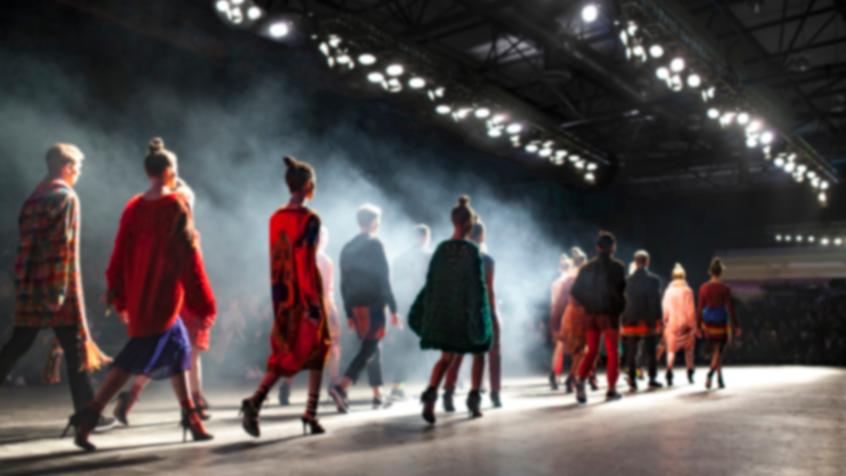The textile industry must transform its business model to improve its image
How to contribute to sustainable growth by only producing clothing that will actually be worn ?

The economic and health crisis
The economic and health crisis is imposing new rules on many industries around the world. There will be a before and after Covid-19 and the fashion industry has not been spared. During the various lockdowns, brands had to deal with major problems: the obligation to sell their products online (for those with access to this distribution channel), overstocking, loss of revenue, issues paying employees and, above all, the inability to plan an optimal response due to the unpredictability of the health crisis. Fashion cycles are indeed hardly compatible with the current increase in unforeseen events. This situation has created problems across all fashion ecosystems. This industry is more seriously affected than others. Indeed, even in difficult times, consumers remain highly reactive to trends, and unsold items from one season will be difficult to sell the following year. Fashion ecosystems must adapt to this new normal and accept a sometimes harsh reality: no brand or retailer will sacrifice their own existence and their employees’ jobs for the sake of subcontractors.
The first concern of the fashion industry is to transform itself to better adapt to this new situation. Is it possible to only design, develop, produce and market what consumers will actually buy? And, even more pertinent, what they are actually going to wear! While also adapting to this new playing field. Although environmental issues are not really a priority at the moment, consumers are increasingly concerned about where the products they buy come from and what they are made of. This concern for sustainability is particularly apparent in the boom of the second-hand market. This trend is indeed interesting and positive, but its scope remains limited. To make real change, we need to transform the way new items are produced.
From entry margin to exit margin, a new business model
To meet this challenge, the fashion industry, like any industry, must generate substantial profits. The key issue is to stop focusing on the “entry margin,” i.e., the margin you can potentially make on the cost of a garment that has just been produced. Instead, the focus must be on the “exit margin,” which is the difference between the cost of the garments produced and the overall turnover achieved when selling them. This “exit margin” must also take into account legislative changes and in particular the adoption of the Anti-waste and Circular economy law adopted by the French parliament on January 30. A pioneer in this field, France has gone further than other European countries. To comply, the French textile industry will undoubtedly have to make drastic changes. Some may consider them as risks. They may also be seen as a fantastic opportunity to design a new generation of supply chain in France, based on these new requirements. With an unequaled “soft power” in textiles, as demonstrated notably by the robustness of the “KOHLs*” during the crisis, the French industry (and European by extension) could use this pioneering positioning to extend its leadership thanks to a business model that would be difficult to copy and would generate sustainable growth.
Expertise and technology: the keys to the profitability of small series production over short cycles
In this context, expertise and technology are the main drivers for success. To meet the new requirements of customers, always looking for novelty, it is now possible and profitable to complement (or even replace, in the longer term) existing supply models with small series production over cycles of only a few weeks, by leveraging the data available today (sales figures across all channels, social network interaction, etc.). The objective is ultimately to sell items at “full price”, rather than producing them as cheaply as possible and manufacturing large volumes of products that will almost certainly end up being marked down.
The whole chain must adapt to this new context. The strategy based on offering the lowest price is therefore replaced by a focus on greater agility. To gain a competitive edge, manufacturers will have to focus more and more on their ability, thanks to their production tools and new advanced services, to process more orders, both more specific and in smaller volumes, within shorter deadlines. To make this new model viable, many brands may choose suppliers within industrial ecosystems located closer to their consumer markets.
From design to production and even distribution, subcontractors will therefore have to meet brand requirements in terms of transparency and sustainability. This requires companies to have 360° visibility on all their operations, so they can transmit the information to their customers, who can then pass it on to end consumers, now increasingly eager to know if the products they buy are environmentally and socially responsible (without being prepared to pay more for them). While this can be done across great distances, it is usually easier to achieve locally, as ecosystems and transparency are largely interdependent.
We are still a long way from such levels of mutual transparency. Digital technology is undoubtedly one of the keys to achieving this objective as it ensures traceability and allows one to collect all the product data throughout the value chain and interconnect the IT systems of the different players, which is always a challenge. Some manufacturers have already made the necessary investments to trace the materials used and control the manufacturing processes. This trend is likely to accelerate dramatically and investment in expertise and technology will be one of the keys to this transformation.
The economic crisis will undoubtedly leave its mark. It is also a fantastic opportunity to invest in digital technology in order to develop, in Europe, sustainable ecosystems that are difficult to copy: a unique opportunity for brands to revamp their image by significantly contributing to building sustainable growth and to come out on top after this unprecedented crisis.
KOHLs: Kering, L'Oréal, Hermès, LVMH
Related Content









